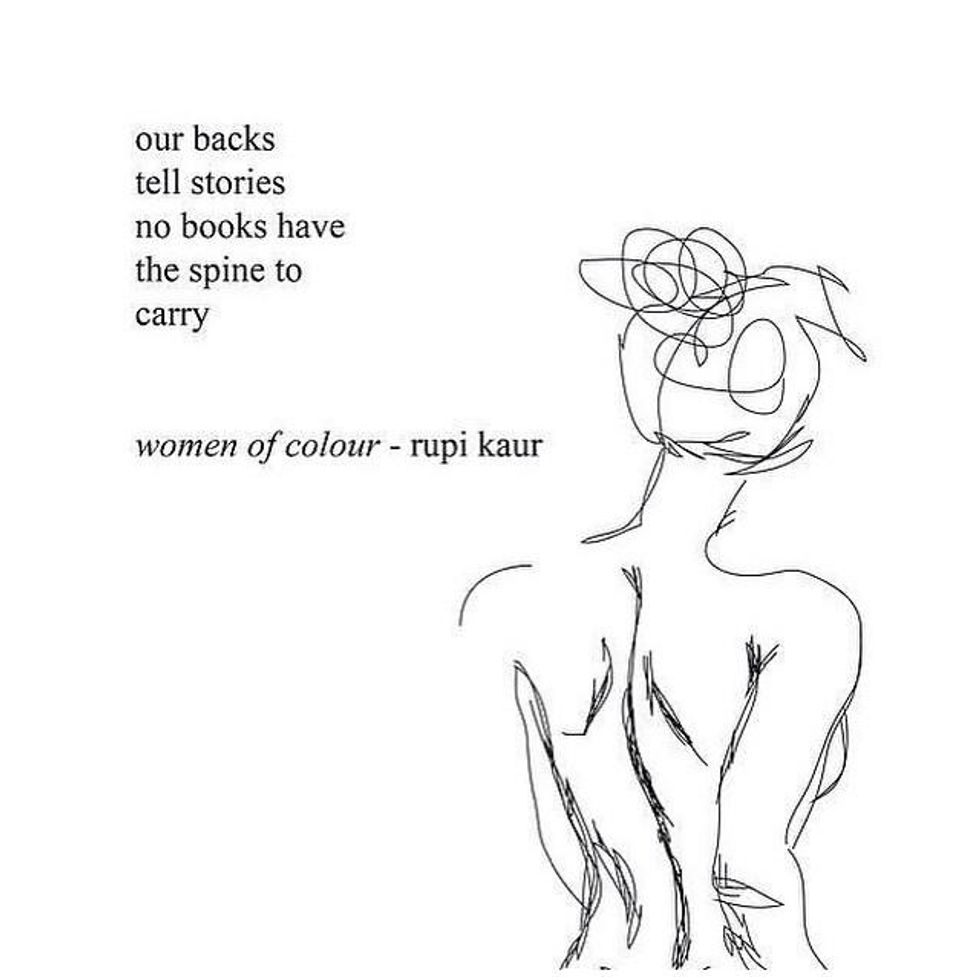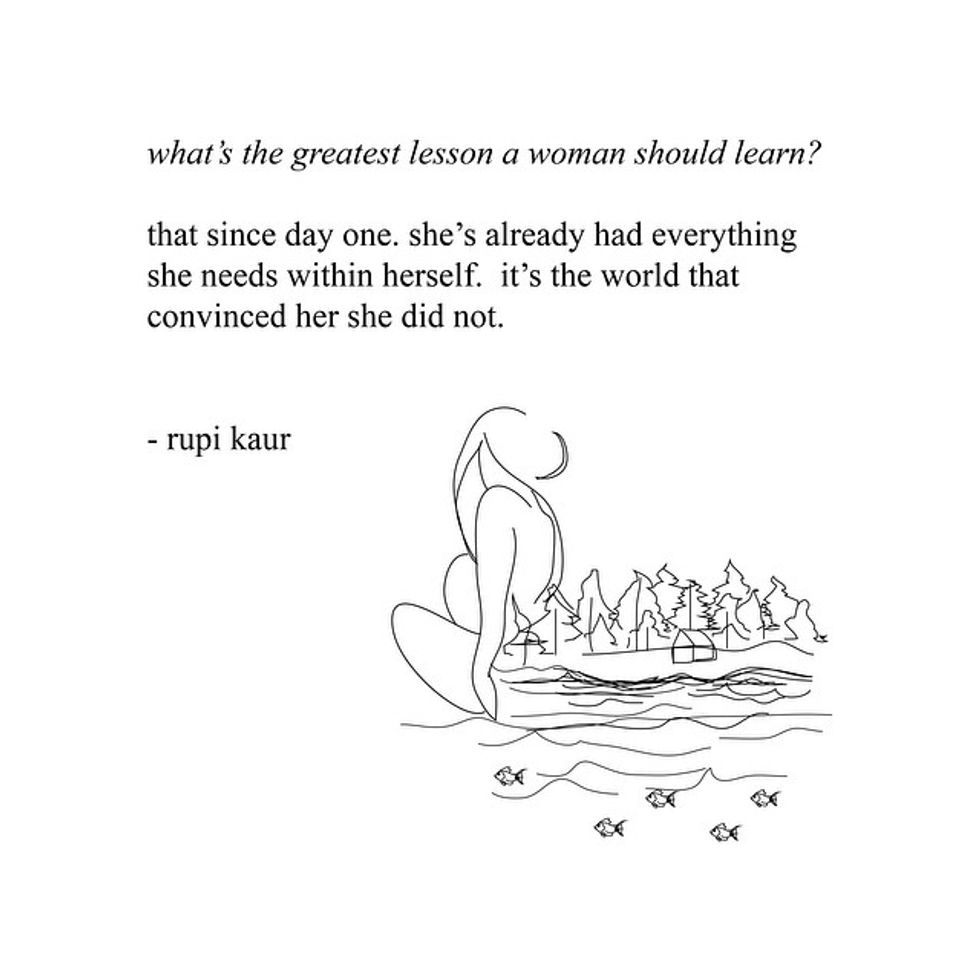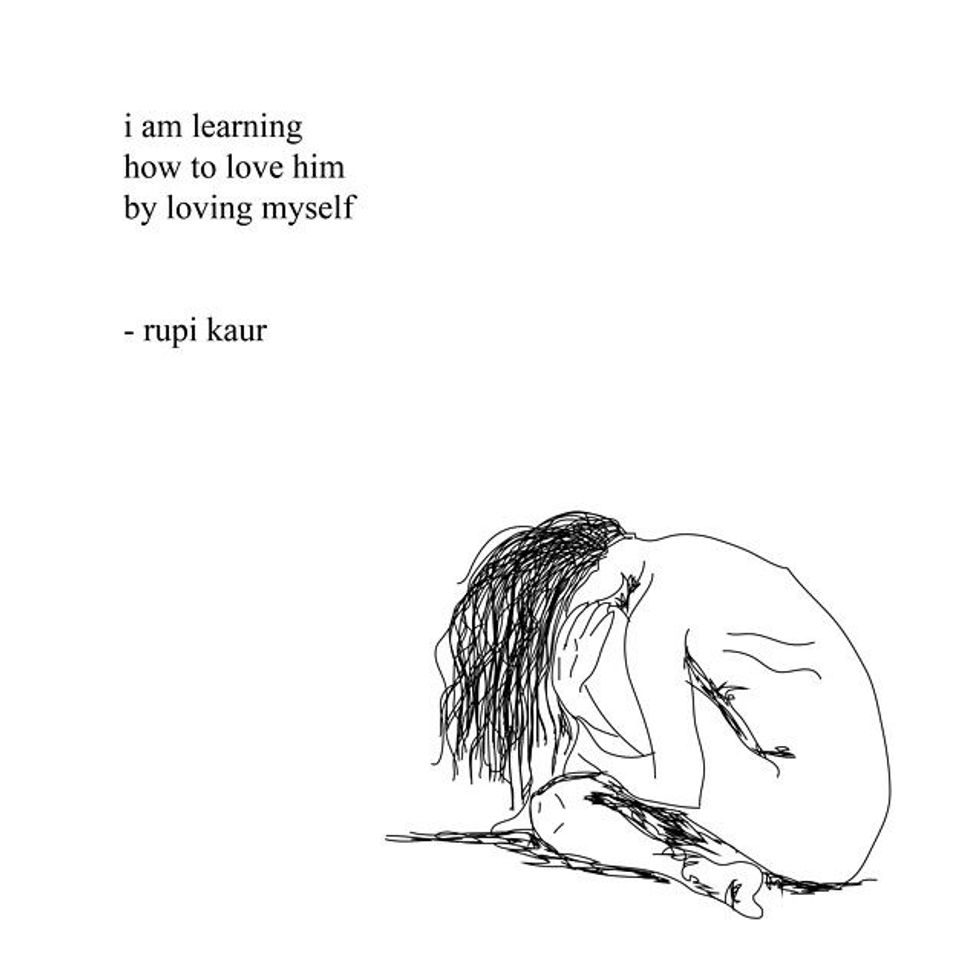Accompanied by her own simplistic yet powerful sketches, "Milk and Honey," by poet Rupi Kaur, is a book containing four chapters of short, heartbreakingly empowering poems. Kaur drew from her own experiences with love, loss, pain, and healing to portray the experiences of the modern day woman. The book uses topics like gender, love, loss and healing along with the use of language, imagery, and diction to help execute pure raw emotion within each poem.
An overarching topic and theme throughout Kaur’s novel is feminism and gender roles. Whether trying to empower women through the help of other women or through the help without a man around, Kaur uses feminism along with positive and negative female experiences to further empower and inspire the female readers of this book.
In this simple, one sentence poem, she speaks miles. Books are seen as strong, knowledge-filled objects that tell stories true and or false. These books can come in a variety of shapes and sizes, they can appear brand new, freshly taken off the printer, or they can appear deeply weathered and used. Kaur is using books as a comparison to women and how they can come in different shapes, sizes, and conditions but still remain strong, and in this case, stronger than books. The stories that are in these books is what makes them and that is the same with women. Carrying life experiences and stories around with a person for a lifetime can have its effects on a person, whether positive or negative, this poem reassures women that no matter what stories they might have and no matter what may have happened to them, they are stronger than they imagined.
This poem touches on society’s look and perception of women, and a negative one at that. From day one, a woman is taught that she is not enough on her own. Whether she needs the help of a friend, a partner, makeup, clothes, etc, she is not enough. After a long time of being told this repeatedly day in and day out it obviously has negative side effects and eventually, women begin to believe it. Within this poem, Kaur is letting women all around the world know that they are enough just as they are. This is an incredibly important message that is not said enough in our society and Kaur executes it wonderfully.
When she isn’t empowering women through her poems, Kaur is using her experiences with love and heartbreak and channeling that into her writings as well. Love is usually accompanied by heartbreak and both of these are familiar feelings that almost everyone can relate to in some way or another.In the previous chapter entitled, the loving, Kaur expressed and described her incredible experience with love and how it shaped her. The breaking is a collection of poems that pick apart the love that she described so decadently.
This situation that Kaur is describing is unfortunately extremely common among young couples. People stay with each other despite unpleasant feelings just to be together, regardless of their happiness or not. These abusive relationships consume individuals and they push it away and try to act like nothing's wrong with their relationship. The poems within this book aren’t just based off of relationships that may have been good or bad, but also based on relationships people have with themselves.
A message frequently spread throughout this book is that of self-love. Kaur does an excellent job in a majority of these poems saying that before anyone can express love for another person they have to be able to love themselves and be comfortable with their own skin. Kaur’s main audience is teenagers and young adults, so this message is certainly important to be said.
From beginning to end, "Milk And Honey" is enriched with beautiful language that helps Kaur tell her stories greatly through her intense imagery, magical metaphors, or depictive descriptions.
This opening sentence does many things, firstly, it creates this image inside of the reader’s mind of a snake shedding its skin. It then begs the question of how could a human be snakeskin and what it truly translates to. By shedding this snakeskin, she is finally forgetting whoever and or whatever was the snake and is finally letting go. Through this use of language and metaphors and descriptions, readers are able to draw connections to their own lives.




















